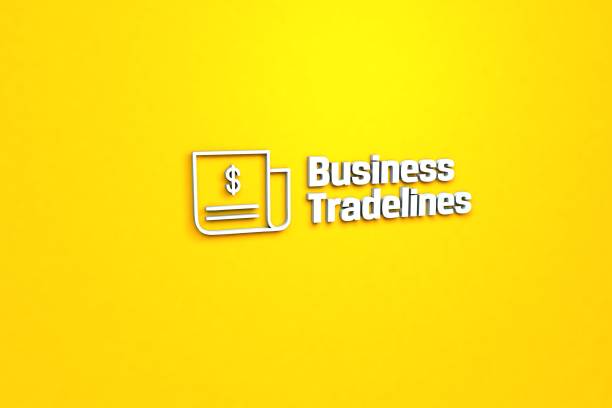Welcome to our comprehensive guide on the different types of tradelines. Understanding tradelines is crucial whether you’re building credit for the first time or looking to improve your existing credit. In simple terms, tradelines are credit accounts that appear on your credit report. These include credit cards, loans, and mortgages, among others. The type of tradeline you have can significantly impact your credit score. One key aspect to consider, especially for business owners, is the trade license renewal process, which requires an understanding of primary and authorized user tradelines. In this article, we’ll delve into these topics in detail, helping you make informed decisions.
What are tradelines?
A tradeline is essentially any credit account listed on your credit report. This includes credit accounts you have opened with creditors such as credit card issuers, mortgage lenders, and other financial institutions. Each tradeline includes specific information about the account, such as the creditor’s name, the date the account was opened, the balance, and the payment history. Therefore, tradelines are vital indicators of your creditworthiness.
The importance of tradelines in credit reporting
Tradelines significantly impact your credit score, which in turn affects your ability to secure loans, credit cards, and even favorable interest rates. Factors such as payment history, credit utilization ratio, length of credit history, and types of credit accounts are crucial. For instance, a well-managed credit card account could boost your score, while missed mortgage payments could harm it. Having diverse types of tradelines can also positively impact your score. It’s essential to be aware of these when considering trade license renewal, as businesses often need a healthy credit profile.
Types of tradelines
Primary tradelines are accounts opened directly in your name. These accounts have the most significant impact on your credit score, positively or negatively.
- Credit Cards: One of the most common types of primary tradelines, this includes bank-issued cards with varying limits and terms.
- Loans: This category encompasses personal loans, auto loans, mortgages, and student loans, all of which play vital roles in your credit profile.
- Retail Credit Accounts: These are lines of credit offered by retail stores, often used for specific purposes or product categories.

Authorized user tradelines
Authorized user tradelines involve accounts where you are added as an authorized user but are not the primary account holder. This type allows you to benefit from the account’s history without being responsible for the debt. Below are some common scenarios:
- Credit Cards: Most commonly, you can be added as an authorized user to someone else’s credit card.
- Family and Friends Accounts: Often used to help boost one’s credit score, provided the primary user has a good history.
Mortgage tradelines
Mortgage tradelines involve accounts associated with mortgage loans, significantly impacting your credit score due to their size and long-term nature. For better clarity, here’s a breakdown:
| Type of Mortgage | Description |
|---|---|
| First Mortgages | Primary home loans that generally have a significant impact on your credit score. |
| Second Mortgages | Home equity loans or lines of credit, usually taken against the value of your home. |
Installment tradelines
Installment tradelines involve repaying a borrowed amount over a set period. This category includes specific types:
- Auto Loans: Agreements made to repay a borrowed sum for a vehicle over a specified term.
- Student Loans: Loans taken out for educational purposes, often with deferred payment schedules.
The pros and cons of different tradelines
Primary tradelines come with several advantages:
- Opportunity to build a solid credit history from scratch
- Complete control over the account and its management
- Immediate and direct impact on your credit score
Cons of primary tradelines
However, there are also risks involved:
- High risk of damaging your credit score if mismanaged
- Full responsibility for all payments and debts
Pros of authorized user tradelines
Authorized user tradelines also have their benefits:
- Potential to boost your credit score without being responsible for the debt
- Learning opportunity from observing responsible credit management
Cons of authorized user tradelines
But there are downsides to consider:
- Limited control over the account and its usage
- Possible negative impact if the primary user mismanages the account
How to choose the right type of tradeline for you
Choosing the right type of tradeline depends on your individual financial situation and credit goals. Here are some key factors to consider:
- Assess your current credit status and determine what type of tradeline would benefit you most.
- Consider your ability to manage payments responsibly.
- Evaluate the potential risks and rewards of being an authorized user versus holding a primary tradeline.

Conclusion
Understanding the different types of tradelines is vital for effective credit management. Whether you’re using primary tradelines, becoming an authorized user, or managing mortgage or installment tradelines, each type has its unique benefits and risks. Carefully selecting the right tradeline can provide you with a robust tool to build or rebuild your credit. By understanding these, you can take proactive steps toward improving your financial standing, including staying consistent with trade license renewal processes.
FAQs
1. What is a tradeline?
A tradeline is a credit industry term used to describe the accounts listed on your credit report. Each tradeline includes details about the creditor and the debt, including the balance, payment history, and more.
2. How do authorized user tradelines impact my credit score?
Authorized user tradelines can positively impact your credit score by adding the account’s positive history to your report. However, negative activity by the primary account holder can also adversely affect your score.
3. Can I remove a tradeline from my credit report?
Yes, tradelines can be removed from your credit report, typically if there are inaccuracies. This usually involves disputing the tradeline with the credit reporting agency.
4. What is the difference between a primary tradeline and an authorized user tradeline?
A primary tradeline is an account opened in your name for which you are fully responsible. An authorized user tradeline allows you to be added to someone else’s account, benefiting from their credit history without being responsible for the debt.
5. How long do tradelines stay on my credit report?
Tradelines for positive accounts can stay on your credit report indefinitely, while negative accounts typically remain for seven years. However, certain types of negative reports, such as bankruptcies, may remain for up to ten years.
